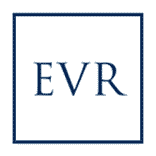Art and Design
Primary tabs
In design, every project is created: thought out, analysed and finally drawn and carried out. But can every project also be considered a work of art?
Bruno Munari states that design should not have a personal style, but should invent different styles according to what must be communicated, unlike artists, who must be recognisable thanks to their style.
Yet there is a place where art and design mix, through paintings, mosaics, sculptures, bas-relief decorations, statues, columns, engravings, wall paintings, glass, furnishings, design elements, drawings, projects and huge preparatory cartoons. As well as being a world showcase for Mediterranean architecture, E42, with its complex of architectural relations, both permanent and temporary, was in fact also an important illustration of Italy's artistic talent in the widest possible forms of expression, both art and design. An exhibition city that was to have been the Olympiad of Civilisation: colourful, flaming with mosaics and wall paintings and crowded with statues, very unlike the world of silent, white, metaphysics.
Artists, decorators and designers, among whom Guerrini, Funi, Sironi, Severini, Prampolini, Depero were significant figures, were called upon to create projects and works for the architectural elements of E42. Numerous items of great artistic and scenic value remain to bear witness to this particular philosophy, which was never fully completed due to the well-known war events, and they are still highly appreciated by numerous researchers, architects, students and ordinary people, who come here from every part of the world to visit them.
Among the works of E42, particular attention must therefore be given to design and creation of the furnishings and accessories for the various buildings. While the undoubted protagonist of the architectural story of E42 is Marcello Piacentini, the - less fortunate - question of decorating the exhibition city found its reference figure in Cipriano Efisio Oppo, deputy commissioner for E42 and sole commissioner of all the works of art. One very novel feature was their great flexibility and modularity, allowing them to be staged and used in a very elastic and versatile manner. In Palazzo Uffici in particular this production achieved its maximum level of quality, also because it was the only building to be fully completed. For example, the architects Guglielmo Ulrich and Giorgio Gori were called on, respectively, to design the official and ordinary furnishings under the guidance of the architect Gaetano Minnucci, designer of Palazzo Uffici. Many examples of the historic production of furnishings for E42 are habitually loaned by Eur SpA to exhibitions and displays throughout the world.
Bruno Munari states that design should not have a personal style, but should invent different styles according to what must be communicated, unlike artists, who must be recognisable thanks to their style.
Yet there is a place where art and design mix, through paintings, mosaics, sculptures, bas-relief decorations, statues, columns, engravings, wall paintings, glass, furnishings, design elements, drawings, projects and huge preparatory cartoons. As well as being a world showcase for Mediterranean architecture, E42, with its complex of architectural relations, both permanent and temporary, was in fact also an important illustration of Italy's artistic talent in the widest possible forms of expression, both art and design. An exhibition city that was to have been the Olympiad of Civilisation: colourful, flaming with mosaics and wall paintings and crowded with statues, very unlike the world of silent, white, metaphysics.
Artists, decorators and designers, among whom Guerrini, Funi, Sironi, Severini, Prampolini, Depero were significant figures, were called upon to create projects and works for the architectural elements of E42. Numerous items of great artistic and scenic value remain to bear witness to this particular philosophy, which was never fully completed due to the well-known war events, and they are still highly appreciated by numerous researchers, architects, students and ordinary people, who come here from every part of the world to visit them.
Among the works of E42, particular attention must therefore be given to design and creation of the furnishings and accessories for the various buildings. While the undoubted protagonist of the architectural story of E42 is Marcello Piacentini, the - less fortunate - question of decorating the exhibition city found its reference figure in Cipriano Efisio Oppo, deputy commissioner for E42 and sole commissioner of all the works of art. One very novel feature was their great flexibility and modularity, allowing them to be staged and used in a very elastic and versatile manner. In Palazzo Uffici in particular this production achieved its maximum level of quality, also because it was the only building to be fully completed. For example, the architects Guglielmo Ulrich and Giorgio Gori were called on, respectively, to design the official and ordinary furnishings under the guidance of the architect Gaetano Minnucci, designer of Palazzo Uffici. Many examples of the historic production of furnishings for E42 are habitually loaned by Eur SpA to exhibitions and displays throughout the world.
